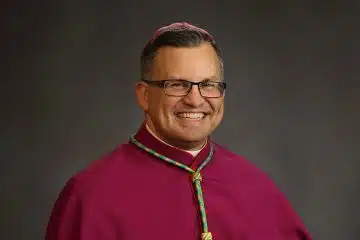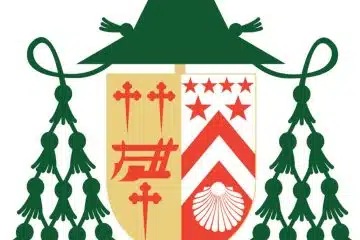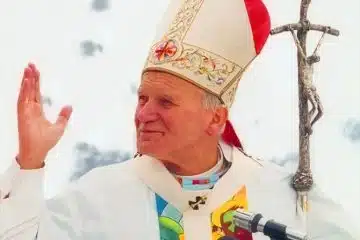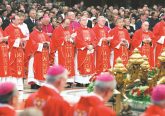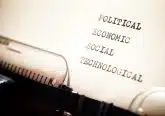The Catholic Moment: Authority
Thursday, November 12, 2009
By Father Kyle Schnippel
Recently, I had the opportunity to attend a conference sponsored by the Coming Home Network focused on the issue of papal authority in the church — how it developed and what it means for the church today. The main focus of ministry for the Coming Home Network is to assist former Protestant clergy in “coming home” to the Catholic Church. With a membership of well over a thousand, Marcus Grodi and his team have been very successful.
With a clientele such as this, it is easy to see why the issue of Petrine authority passed down through the papacy is of vital importance. As Protestant clergy, many of their membership have had to struggle with this issue: did the commissioning of Peter by Jesus in Matthew 16 as the rock upon whom Jesus would build the church continue after Peter’s death? Was it handed on to his successors?
For many of our separated brothers and sisters, Peter’s authority died with him. But, as Catholics, we believe that this authority is not connected just with Peter the man, but also with the office that he inaugurated: the papacy.
We seem to take it for granted that Peter is the leader of the 12, but we look back through 2,000 years of history where this principal has long since been established. In examining the Scriptures, we never see his authority challenged; he is always clearly in charge, at least after the resurrection.
Some modern scholars, especially in Protestant circles, argue that this is because those areas where Peter was challenged were whitewashed out of the Scriptures. The argument follows that as the papacy became established, the popes had the Scriptures redacted to remove any objectionable aspects. If so, why did they keep the immediate follow-up to the commissioning of Peter where Jesus calls him Satan? If the popes had the ability to cleanse the Scriptures, certainly they would have gotten rid of Matthew 16:23!
The fruits of modern biblical scholarship do not support this thesis, either. Critical editions of the Scriptures outline all the various versions that have come down to us through the ages. The oldest fragments of writings of the New Testament date from the middle part of the second century, and these ancient sources corroborate very well with the Scriptures as we have received them today. Simply, there is no evidence to support the various claims.
Rather, we can take it on faith that Peter assumed the leadership of the nascent Christian community right from the start. We have no record otherwise. But the interesting question that drove the conversation at the conference was: “How did Peter assume this authority so quickly, and without challenge?”
To find this answer, we return to the passage in Matthew (16:13-20) where Jesus gives Peter the keys to the kingdom of heaven. When we think of keys, it is easy to think just of the small ring of keys that we keep in our pocket, keys to the house, the car and the office. But this was not so in the time of Jesus. The key to the temple was massive, a three-foot long beam with a few prongs on the end to reach through the door of the temple and unlock the gates. It was carried on the shoulder of the one who had possession and he served in the name of the king or high priest, and shared in the authority by virtue of the office he had.
As the disciples heard Jesus give Peter the keys to the kingdom of heaven, this was the image that they conjured, very clearly having Peter take on the authority of leadership by virtue of his office and in the name of Christ. These keys are then passed down throughout the generations, even to Pope Benedict.
We are then able to trust that God has not left us orphans, but has provided an office by which we can know for sure that He is still with us. Let us rejoice in the Lord that we have been given so great a gift as the papacy and magisterium to safeguard and transmit the deposit of faith over these last 2,000 years.




